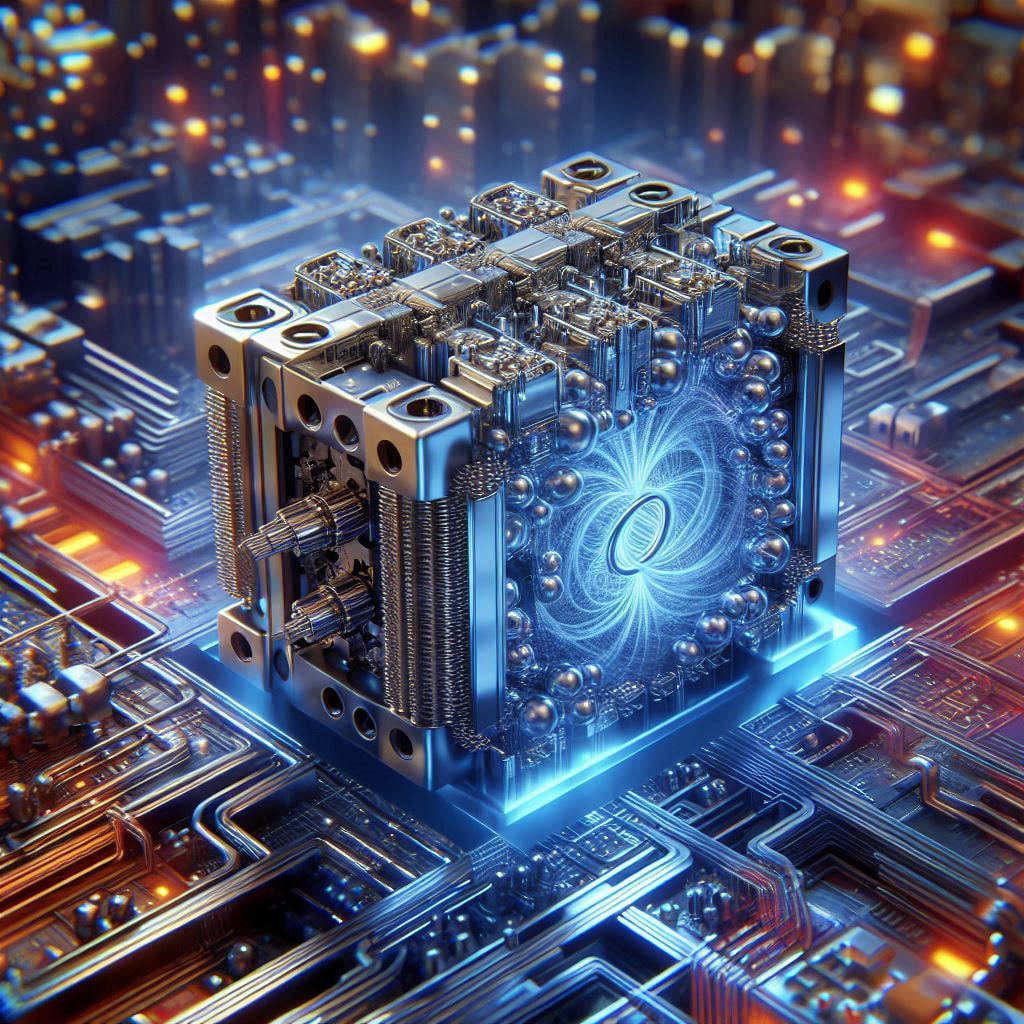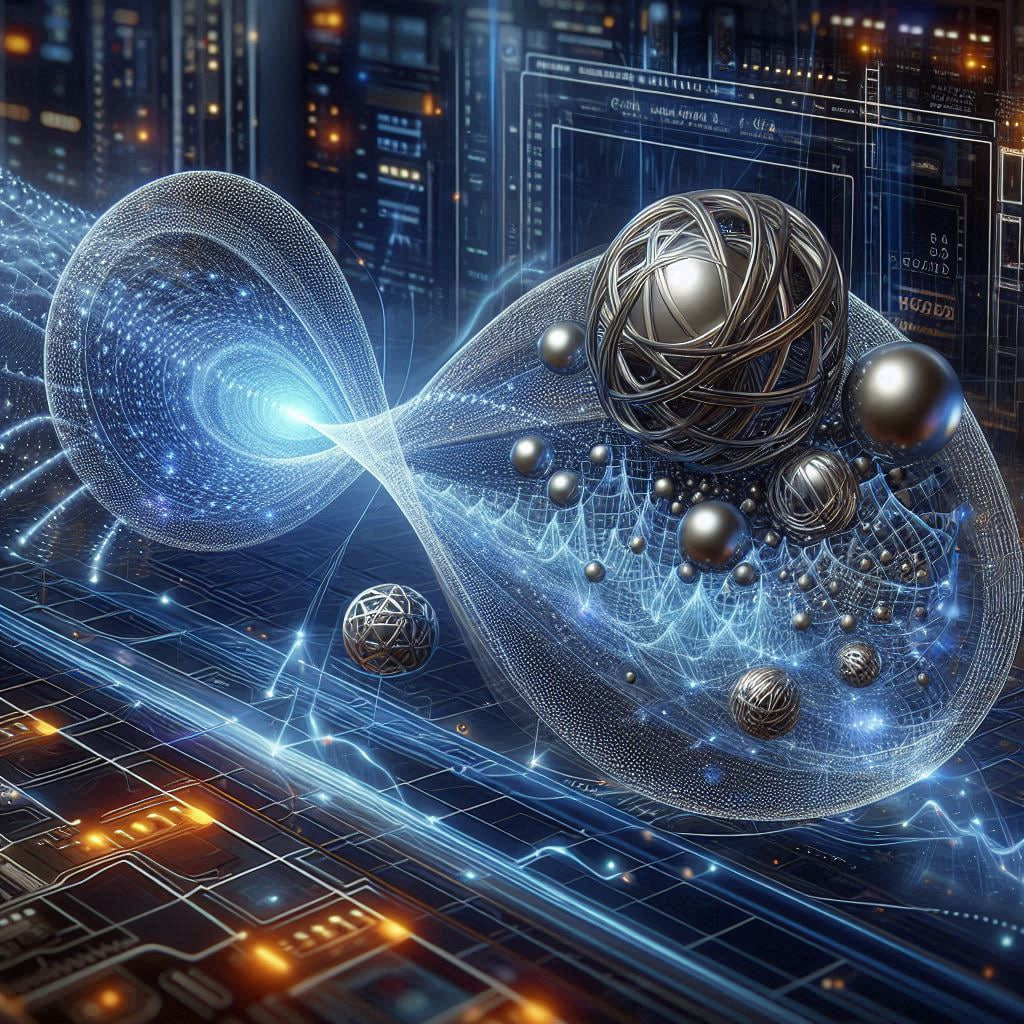Deep dive into quantum error correction: techniques for fault-tolerant quantum computing
 Christopher Wilson
Christopher Wilson
Quantum computing holds the promise of revolutionizing the way we process information, offering solutions to problems that are currently intractable for classical computers. However, the path to building a practical quantum computer is fraught with challenges, one of the most significant being the issue of errors. Quantum systems are inherently delicate, susceptible to a wide array of disturbances that can introduce errors into computations. To overcome these challenges and build reliable quantum computers, researchers have developed a field of study known as quantum error correction. This discipline is crucial for achieving fault-tolerant quantum computing, where computations can be carried out accurately despite the presence of errors.

The fragility of quantum states
Quantum bits, or qubits, are the fundamental units of information in a quantum computer. Unlike classical bits, which can be either 0 or 1, qubits can exist in a superposition of both states simultaneously, enabling quantum computers to perform complex calculations more efficiently. However, this very property also makes qubits incredibly fragile. They are prone to errors due to various factors, including environmental noise, imperfect quantum gates, and decoherence—a process where quantum information is lost to the environment.
The fragility of qubits poses a significant challenge for quantum computing. Even the slightest disturbance can cause errors that propagate through the system, leading to incorrect results. In classical computing, error correction is relatively straightforward because errors can be detected and corrected by redundancy (e.g., using additional bits). In quantum computing, however, directly copying qubits for redundancy is impossible due to the no-cloning theorem, which states that it is not possible to create an identical copy of an arbitrary unknown quantum state.
Principles of quantum error correction
To address the issue of errors in quantum computing, researchers have developed quantum error correction (QEC) codes. These codes are designed to detect and correct errors without violating the principles of quantum mechanics. The key idea behind QEC is to encode a logical qubit into a larger system of physical qubits, creating redundancy in a manner that allows the detection and correction of errors.
One of the foundational concepts in QEC is the use of entanglement, a uniquely quantum phenomenon where qubits become interconnected such that the state of one qubit is dependent on the state of another. By entangling multiple qubits, information about errors can be spread across the system, enabling the detection and correction of those errors without directly measuring the qubits’ states (which would collapse the quantum superposition).
Quantum error correction relies on stabilizer codes, which are mathematical constructs that help identify errors by checking for specific patterns in the qubits. When an error occurs, it alters the stabilizer measurements, signaling that a correction is needed. This process is designed to correct common types of errors, such as bit flips (where a qubit’s state changes from 0 to 1 or vice versa) and phase flips (where the relative phase of the qubit’s state changes).
Techniques for fault-tolerant quantum computing
Achieving fault-tolerant quantum computing requires more than just error correction; it requires an architecture that can continue to function correctly even when errors occur. Several techniques have been developed to build fault-tolerant quantum computers, each with its own strengths and trade-offs.
One of the most well-known techniques is the surface code, a type of QEC code that arranges qubits on a two-dimensional grid. The surface code is particularly robust against errors, as it only requires local interactions between qubits, making it easier to implement in hardware. The code’s error-correcting capability improves as the grid size increases, allowing for scalable quantum computation. The surface code has become a leading candidate for fault-tolerant quantum computing due to its high threshold for error correction, meaning it can tolerate a relatively high rate of errors before failing.
Another approach is the color code, which also uses a two-dimensional grid of qubits but with a different arrangement that allows for certain types of logical operations to be performed more easily. The color code’s structure makes it particularly suited for certain quantum algorithms, offering advantages in specific scenarios where those algorithms are used.
Topological quantum computing is a more exotic approach that relies on anyons—quasi-particles that exist in two-dimensional systems. In this model, quantum information is stored in the braids formed by the paths of anyons as they move around each other. The topological nature of this model makes it inherently resistant to local errors, as small disturbances do not change the overall topology of the braid. While still largely theoretical, topological quantum computing holds the potential for extremely robust fault-tolerant quantum systems.
The road to practical quantum computing
Despite significant progress in the field of quantum error correction, practical fault-tolerant quantum computing remains a challenging goal. One of the main hurdles is the sheer number of physical qubits required to encode and protect a single logical qubit. Current quantum computers are still in the early stages, with only a few dozen to a few hundred qubits, whereas fault-tolerant quantum computing may require thousands or even millions of qubits to operate effectively.
Researchers are exploring various strategies to reduce the overhead associated with quantum error correction, such as developing more efficient codes, optimizing quantum gates, and improving qubit coherence times. Advances in quantum hardware are also critical, as more reliable and scalable qubit technologies will directly impact the feasibility of fault-tolerant quantum computing.
Another area of active research is the development of quantum software that can leverage error correction and fault tolerance. Designing quantum algorithms that are robust against errors is essential for making the most of early quantum computers and for ensuring that these systems can perform meaningful computations as they scale up.
Conclusion
Quantum error correction is a cornerstone of the quest for fault-tolerant quantum computing, addressing the inherent fragility of quantum systems and enabling the development of reliable quantum computers. Through techniques such as stabilizer codes, surface codes, and topological quantum computing, researchers are building the foundations of a future where quantum computers can perform complex calculations with unprecedented accuracy.
As the field of quantum computing continues to evolve, the importance of quantum error correction will only grow, guiding the development of more advanced and capable quantum systems. While significant challenges remain, the progress made so far provides a promising glimpse into a future where fault-tolerant quantum computers become a reality, unlocking new possibilities in fields ranging from cryptography to material science and beyond.
https://fileenergy.com/pokupki-v-kitae/laboratornyj-reguliruemyj-blok-pitaniya
https://fileenergy.com/pokupki-v-kitae/smart-chasy-cubot-c20-pro
Subscribe to my newsletter
Read articles from Christopher Wilson directly inside your inbox. Subscribe to the newsletter, and don't miss out.
Written by
